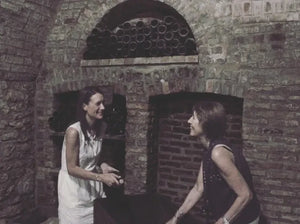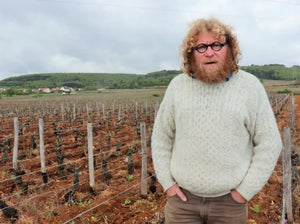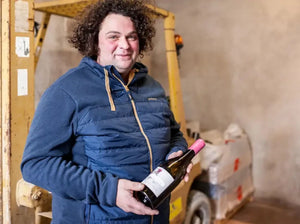Blog » Premier Cru
-
Bitouzet-Prieur: Classicism Holding Steady
We all have regrets. One of mine was passing on Bitouzet-Prieur Volnay and Meursault when I turned on the lights in 2015. A friend once said, “If you’re not embarrassed by choices made in the previous year, then you’re not growing.” The 2020 vintage of this domaine marks my redemption.
With winemaking medals galore filling the home of Vincent Bitouzet back in 1860, the marriage to Annie Prieur after that marked the official start of what is now the most classic domaine in Volnay, along with Lafarge. And the whites from vineyards like Meursault 1er Cru Charmes and Perrières are now another great reminder that value is alive and well in the Côte de Beaune.
I only have a few wines from Bitouzet-Prieur, but they are the best cuvées to me after an extensive tasting with the domaine in Brooklyn last year. The Volnay is destemmed, and pigeage (punchdowns) occur twice per day—a process that has seemingly gone out of fashion in Burgundy of late as many opt for remontage (pumpovers) to bring softer contours and more immediacy to the fruit. But the 2020 Volnay is pure class and is precisely the type of Burgundy I seek out—from the greatest red village of the Côte de Beaune.
The whites see extended lees contact and a maximum of 20% new oak. They pull back on the fruity Chardonnay traits, instead digging deep for a saturating mineral through-line that reminds me of wines common pre-2005 heat. Still bursting with site-specificity and deliciousness, they take my mind back to another time with their soft-spoken spirit. -
House Champagne Hero: J. Lassalle
Champagne from the grower-producers is better than ever. The writing was on the wall when I was living in France in 2012, and it felt like a sea change was underway––I was probably late to notice, but still, names like Agrapart and Chartogne-Taillet became part of my weekly hauls from the local shops in Beaune. One of the names that I was introduced to early on was J. Lassalle. And, though their entry-level pricing has remained astonishingly low at $40, all their champagnes punch well above their price point.
The rosé champagne is a wine that holds a special place in my heart within its category. The pale copper-hued stunner has perfect balance and expertly judged ripeness and dosage. However, I'd be remiss if I didn't use this time to talk more in-depth about the Cachet d'Or 1er Cru Brut Réserve––at $40, it's the most obvious price anomaly in the world of grower-champagne. Aged for three years on lees before disgorgement, it carries both the rich brioche notes you'd desire, with all the finely-woven chalky minerality that is a prereq to go hand-in-hand with the more recognized grower names that sell for double the price. The blend is as classic as the style––equal parts Pinot Noir, Pinot Meunier, and Chardonnay, all from 50+-year-old vines in Premier Cru villages in the Montagne de Reims.
In 1982, after founder Jules Lassalle's passing, his wife, Olga, and their daughter, Chantal, took the reins. In 2006, Chantal's daughter, Angéline, took over as winemaker. "Une femme, un esprit, un style" (one woman, one spirit, one style). The inimitable Kermit Lynch has imported J. Lassalle for over 50 years––the longest relationship in his portfolio of legendary names. -
Designations be Damned: Sylvain Pataille Marsannay
Sylvain Pataille is famous for three things: Producing some of the most texturally seamless and balanced wines in the Côte de Nuits, his oenologist consulting for over 15 domaines, and having really awesome hair. My visit to the domaine was a terroir masterclass, as we tasted over 20 wines from Marsannay.
Marsannay and Pataille are a match made in heaven. Both have seemingly flown under the radar for far too long. Search through any savvy Burgundy collector's cellar, and next to the Rousseau and Dujac, you're sure to find a host of Pataille's Marsannay. This village located above Gevrey Chambertin has a complicated history, though. Mainly planted with Gamay at the time of classifications, no vineyards could receive a status higher than villages.
Today, Clos du Roy would undoubtedly be a Premier Cru, and it's a steal within the hierarchy of Burgundy's elite. There's never shyness here, always finding that elusive mix between power, elegance, and silken tannins without overt new oak influence. And, believe it or not, Le Chaptire's historical pricing in the 16th century was only surpassed by Chambertin-Clos de Beze. It's still among the ultimate insider lieu-dits and an equally worthy cellar mate with Clos du Roy. -
Burgundy Fireworks: Yann Charlopin-Tissier
A June 2016 visit in Burgundy meant tastings with some of my favorite storied domaines like Mugneret-Gibourg and Denis Bachelet, but it was after a lunch with Jeremy Seysses at Domaine Dujac and a beautiful bottle of 1993 Clos de la Roche that I got tipped off to something happening across the street—the new Domaine Charlopin-Tissier.
Yann Charlopin-Tissier’s background is surrounded by legendary figures. His father, Philippe Charlopin, was a student of Henri Jayer as he started his own domaine in 1978. Yann worked closely with his father starting in 2004, and then with another mentor, Jean-Marie Fourrier, before launching his own domaine, now at just 4 hectares. Like these Vosne-Romanée and Gevrey Chambertin mythic names, Yann favors picking as ripe as possible and prefers de-stemming.
Yann filled me in on his methodical and organic approach to viticulture, his excruciatingly low yields, and his disdain for talking too much about winemaking choices in the cuverie. "These wines are made in the vineyard," he would repeat. And the dirt under his nails, and muddy boot prints littered throughout the courtyard drove home that point. For me, this image greatly juxtaposed with what you find in bottle––suave and sophisticated texture, luxurious mouthfeel, supported by very concentrated ripe fruit buffered with mouth-watering salinity.
My two favorite wines of the 2020 vintage capture precisely what is so special here: The Marsannay La Montagne is surely the sleeper pick in the range, but this lieu-dit coming from the top of the slope in Marsannay where it is substantially rockier than below offers a masterclass in balance, between bold, ripe, dark fruit with powdery tannins and mineral finish. The Pernand Vergelesses Sous Frétille is one of best kept secrets in Premier Cru white Burgundy. Always a site that delivers crisp salinity and a Grand Cru-level drama. Yann’s version has a ruthless intensity of fruit with a chalky grip that is truly head-turning. This reflects his ambition for powerfully concentrated wines that still somehow have a wizardly refinement on the palate.
.svg?v=162776257677185172071724397232)






